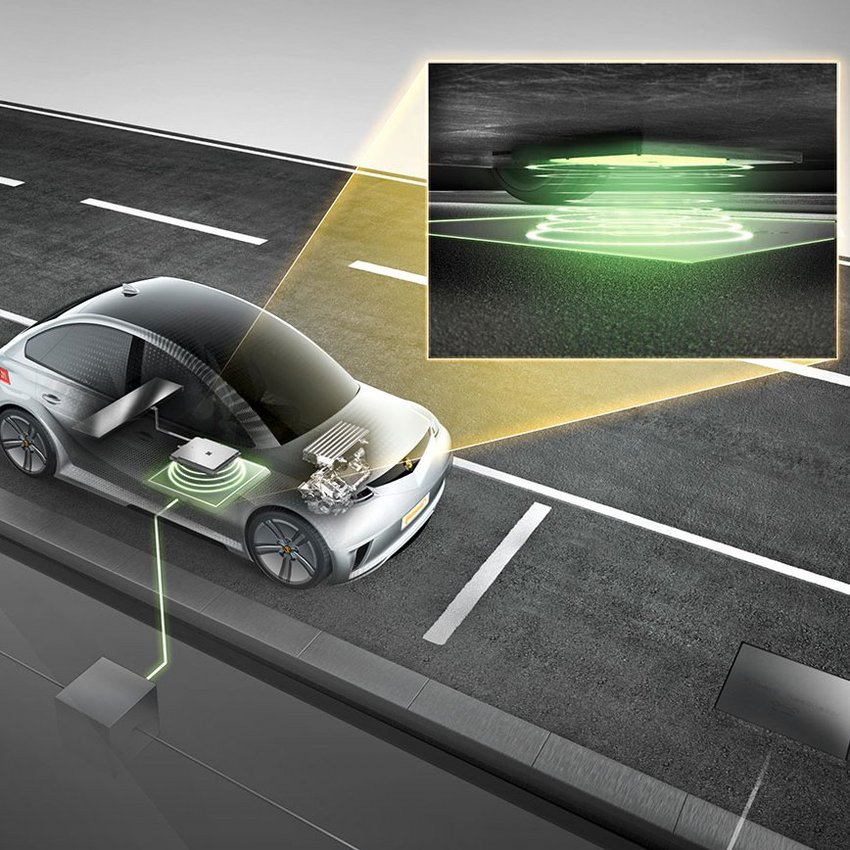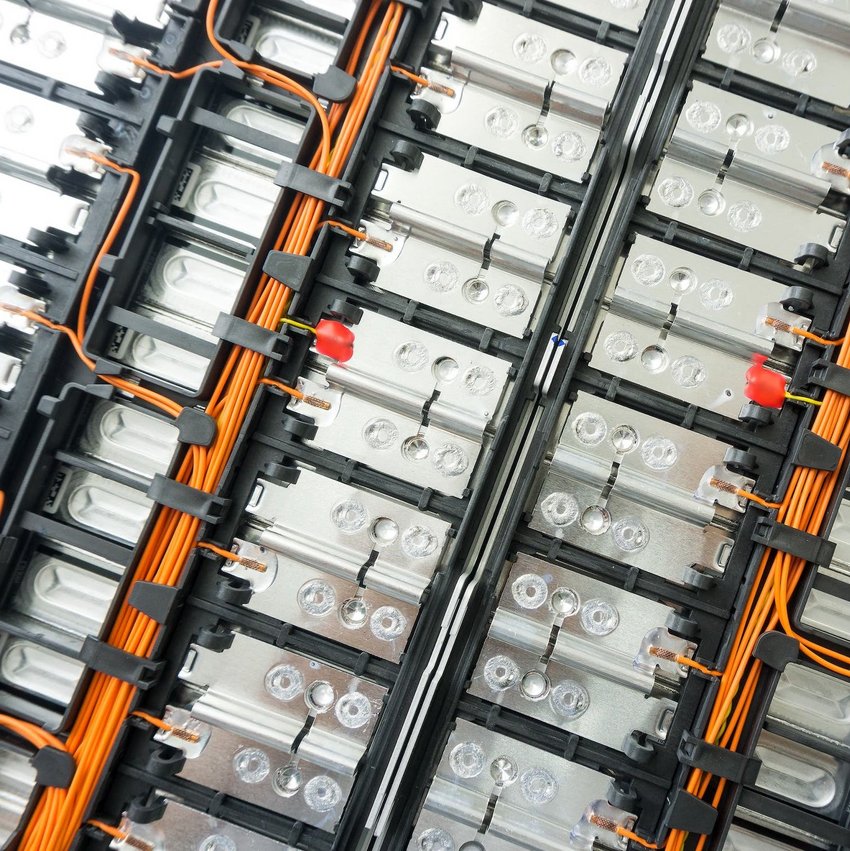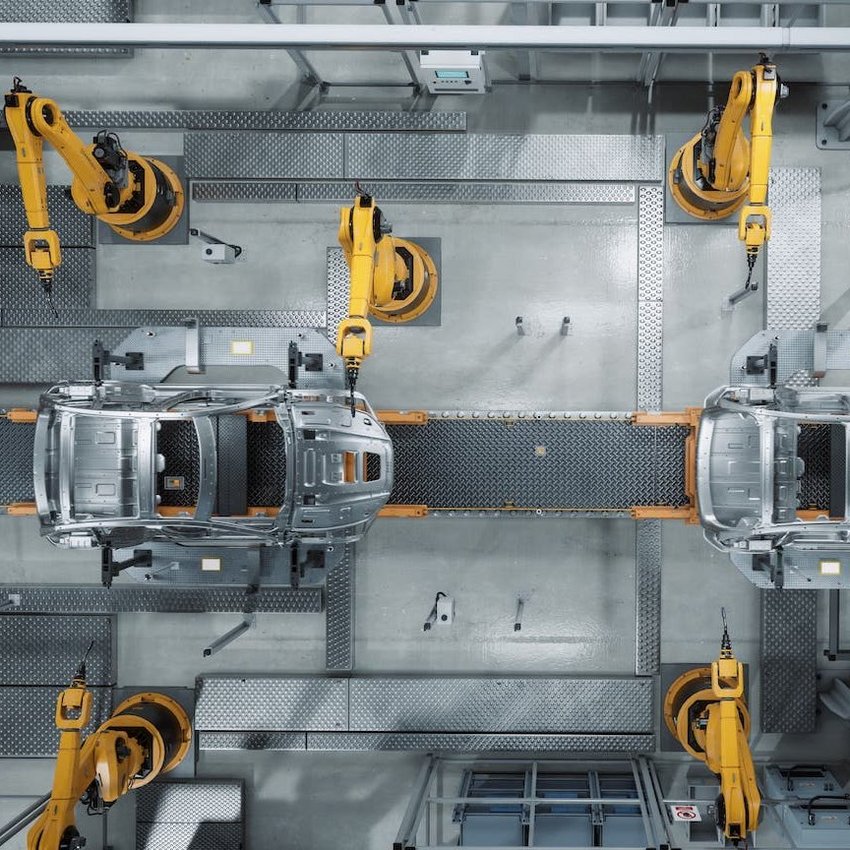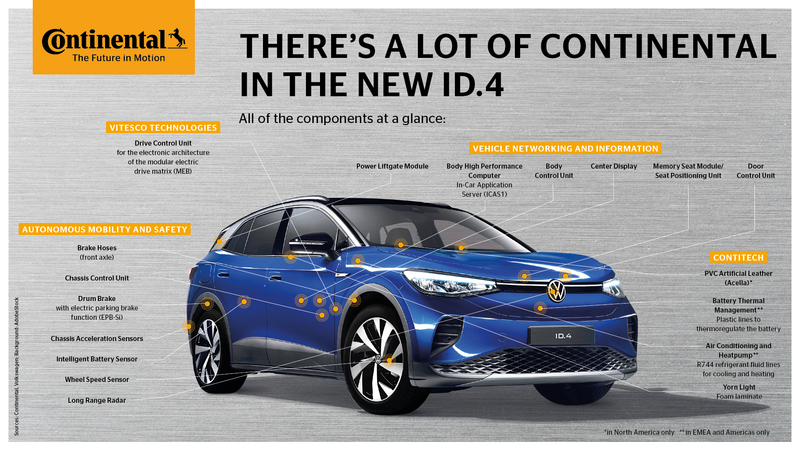Progress Arises from Change
Progress Arises from Change

The departure from fossil fuels and comprehensive digitalization are shaping our times as well as Continental.
In order to achieve the climate targets introduced almost worldwide, the primary energies that supply us must be renewable. The challenges of the mobility transformation and the energy transition will be resolved the fastest with an integrated solution. In industry, the focus is on environmentally friendly production processes, sustainable raw materials and responsible supply chains.


Digital connectivity, in turn, is creating new structures in society, science, politics and the economy. The possibilities communication offers are endless, resulting in a new level of complexity. According to a study by the Zukunftsinstitut (Future Institute) think tank, digital transformation is no longer a purely technological phenomenon, but a socio-technical process. People are increasingly the center of focus here. The inherently human drive for freedom and thus mobility means that people want private means of transportation. Accordingly, the automotive industry needs to offer modern solutions in the context of this transformation.
In the past, mobility was mostly about horsepower. Now it’s about sustainability, safety and connectivity. This change brings progress, which we are actively shaping. The new horsepower of mobility continues to bear the hallmark of Continental.
How mobility is changing
Mobile computers
Ina Schaefer is a professor of software technology and vehicle information technology at The Technical University of Braunschweig and a member of the German government’s Future Fund for the Automotive Industry committee. She is convinced that, “People are less and less interested in the material from which the body of their car is made and more and more interested in what the software behind it can do. The possibility of adapting your own vehicle to your personal needs has today become a matter of course. There are more configuration options for a modern mid-size vehicle than there are atoms in the universe.”
Cars are becoming computers on wheels. The operating system and its connectivity with external services and data are a major competitive factor here. “Over-the-air software updates keep it constantly updated without having to visit a workshop, simplifying maintenance. The digital car offers many possibilities, it enables people, for instance, to watch movies or play computer games and has all the functionalities of a modern office. Currently, these functionalities are only of interest to the passengers. Once the testing of autonomous vehicles is complete, however, cars will become a “third space” for people in addition to their home workplace, a rolling office or home movie theater. It remains to be seen when autonomous driving in this form will become reality. However, the public discussion and interest in the topic are already indicators of how significant the associated change could be.
Sustainability is the new drive


Electric mobility only works with the relevant charging infrastructure. Nejila Parspour is director of the Institute of Electrical Energy Conversion at the University of Stuttgart and is researching innovations in this field. Initially, her field of research was robotics, but she is now working on inductive charging.
"Unlike charging using cables, inductive charging is an innovative technology with numerous advantages that go far beyond user convenience. The vehicle can be charged automatically without any action on the part of the driver. And automatic charging at every parking lot, traffic light, or section of road increases the available range."
To advance electric mobility and make it attractive, a widespread charging infrastructure is needed, as well as batteries that can be recharged quickly. Drives powered by green electricity are the most efficient way to use renewable energies for mobility and support the energy transition. Unlike batteries in cell phones and tablets, batteries in electric cars have a long service life. Older batteries can be removed and used as buffer storage for solar power, for example. The raw materials used to manufacture the batteries are also largely reusable. In the future, batteries in cars could also become part of the electricity grid and buffer solar power surpluses before they are needed again in the grid.


Private transport remains important because mobility and freedom have long been highly valued by people. Prestige, however, is no longer necessarily expressed through ownership, but rather through access to vehicles. The buzzword here is shared mobility. Cars, cargo bikes, mopeds and scooters are already available across cities. There is still some catching up to do in rural areas. To date, there are not sufficient customers for these services. Analyses conducted by the Future Institute have revealed that the coming years will be characterized by consolidation of the markets, including business activities, acquisitions and collaborations. The major providers will then implement the regional expansion of mobility services according to the findings. There will thus be a tendency to integrate the car into a wider network of traffic infrastructure elements in the future.
Transformation of the traditional automotive industry
Digitalization revolutionizes transport systems and vehicles
The automotive industry has long been talking only about the increasing importance of software and digitalization rather than directly implementing them. While the primary focus used to be on optimizing production processes, digitalization is now an absolute must in terms of comfort and safety. The established applications range from simple driver assistance systems for controlling speed, emergency brake assist and parking assist, through to complex connected assistance systems that assume multiple functions simultaneously. The automotive industry is now working hard to be among the pioneers of artificial intelligence and connected and automated driving because software companies are gaining ground in this area and want to position themselves in the fast lane.
These new conditions and the new competition represent both challenges and opportunities. Effectively linking the hardware, i.e. the vehicle, with the software, i.e. the services, will be crucial here. This entry into mobility services opens up new potential sources of earnings. Digitalization makes it possible to adapt mobility to individual needs, be it through the corresponding entertainment electronics or the linking of real-time data relating to traffic, offer and demand. In this way, user-friendly, sustainable and affordable offerings that provide attractive and safe mobility for everyone can be created in the future.
The economy is the mirror of the global political crises
In addition to technological developments and the drive for sustainability, geopolitical crises and the COVID-19 pandemic are having a major impact on the economy. The war in Ukraine is causing immense human suffering and should be ended as quickly as possible by diplomatic means. In addition to the human tragedy, the military operations are disrupting supply chains. In the automotive industry, the supply situation for wiring harnesses and raw materials such as neon gas, palladium and nickel is critical because suppliers are located in war zones and transport routes are being disrupted.
The ongoing Covid-19 crisis has led to a shortage of semiconductors. In early 2020, the automotive industry was worried about weaker demand and therefore canceled its orders from chip manufacturers. This, however, was a misjudgment. The semiconductor industry quickly found other customers – the manufacturers of entertainment electronics. “During the pandemic, we worked from home, did sports from home, attended school from home, and entertained ourselves at home,” says industry expert Julia Hess from the Berlin-based Neue Verantwortung (New Responsibility) foundation. “This has led to increased demand for smartphones, tablets, laptops and games consoles. Consequently, global chip supplies were soon exhausted.” Semiconductor companies are now requiring purchase guarantees before making further investments, as the automotive industry is a relatively small customer compared with the IT industry or entertainment electronics.
Global change
For Germany, a significant share of the economy is being put to the test during the ongoing transformation. One in ten jobs depends on the automotive industry. This accounts for around four million employees and the automotive industry itself employs around 800,000 people. The industry is not only a reliable economic engine, it also produces innovations. According to a study by the German Economic Institute, half of all patent applications are filed by the automotive industry. It is essential to change the industry in such a way that climate protection and prosperity are equally assured. The President of the German Association of the Automotive Industry (VDA), Hildegard Müller speaks of an investment of more than €220 million in digitalization, electric vehicles and battery technology by 2026.
The biggest investments are an expression of our willingness to enable carbon-neutral mobility as quickly as possible.
In the US, fully electric cars account for less than two percent of sales. Experts, however, expect the trend toward electric mobility to accelerate since manufacturers are under pressure. California intends to ban the sale of new cars with combustion engines from 2035. As of 2035, US President Joe Biden will be stopping the purchase of vehicles with combustion engines for public services. This will affect 650,000 government vehicles. The US population will benefit from the construction of half a million additional charging stations in the country. Biden has set himself the goal of powering 20% of passenger cars and trucks electrically by 2030.
In China, the use of electric cars is already a significant lever for reducing dependency on fossil fuels. The country is leading the global market for electric cars by a wide margin. From January to September 2021, 1.788 million fully electric cars were newly registered in the People’s Republic. This development is being supported through rapid expansion of the charging infrastructure. According to data from the China Electric Vehicle Charging Infrastructure Promotion Alliance, 542,000 new charging points were installed in the country in the first nine months of 2021. The organization now counts 2.223 million points across the country.
What applies to companies in general also applies to the automotive industry: Complexity is increasing everywhere. This is why the networking of expertise is becoming increasingly important. Challenges cannot be solved by a corporation or an industry alone, but only in unison. Digitalization and sustainability are leading to significantly shorter development cycles and a high technological pace. This makes investment, rethinking and adjustments necessary In the age of connectivity, companies can no longer operate as autonomous units, but only as part of various ecosystems, which in turn lead to new opportunities and ultimately to progress.


Continental realigned
Digital innovation and traditional business
Continental set the course for transformation at an early stage by realigning its strategy to the changing mobility sector. In 2021, the entire organizational structure and company processes were adapted to address the external changes. The new alignment helps the company to seize market opportunities even more rapidly and react to changing customer requirements. The transformation of mobility is regarded as an opportunity to be seized – Continental’s strategy here is based on three cornerstones:
2. Differentiating the portfolio
3. Turning change into opportunity
Strengthening operational performance ensures future viability and competitiveness. Continental has divided the Automotive group sector into five new business areas for this purpose. The former Rubber Technologies group sector has been dissolved. Tires and ContiTech are now independent group sectors.
We are implementing our strategy with determination. Accordingly, we are investing in our growth areas and future technologies, seizing market opportunities, enhancing our capacity to respond and providing for greater transparency.
The product portfolio has been differentiated in a targeted manner into the focus areas of growth and earnings. The growth area relates to dynamically growing and innovative fields, whereas the earnings area includes the business in saturated and stable, but low-growth markets. In the Automotive, Tires and ContiTech group sectors, the group is focusing its growth activities on what will be decisive for customers’ future purchasing decisions: innovations in safe, connected and automated driving, for example. In the area of earnings, the focus is on profitable product areas where the company enjoys a solid competitive position. These include, for example, display and control systems, surface materials and the European tire business.
Focus on sustainability
Continental’s sustainability ambition includes four focus areas: “carbon neutrality,” “zero-emission mobility and industry,” “circular economy” and a “responsible value chain.” In line with these goals, the changes in the relevant topic areas are to be implemented by 2050 at the latest, jointly with partners across the value chain. The continuous expansion of the business with vehicles without drive emissions in particular, is a key element.
Automotive
In the Automotive area, Continental is making important technology contributions for Volkswagen’s ID. series. Many areas of the new electric vehicles have Continental ideas, systems and solutions on board – from the software and central computer architecture through to brakes and complex thermal management systems for functions such as battery cooling. The ID. series marks a decisive step into an era when “E” stands not only for “electric”, but also for “emission-free.”
Continental also supplies key elements for an intuitive and attractive user experience in the new BMW iX. This electric vehicle integrates Continental’s high-performance cockpit computer in response to in-vehicle digitalization. It manages the increasingly complex software and the rapidly growing scope of functions in the cockpit. Continental thus offers key building blocks for seamless interaction between driver and vehicle for a novel user experience.

Tires
In the Tires group sector, 2021 saw a very special world premiere. More than half of the Conti GreenConcept tire consists of renewable or recycled materials. Continental aims to switch completely to sustainably produced materials in its tire products by 2050 at the latest. What is meant by “sustainable” are all materials that originate from a closed material cycle, have no harmful effects on people or the environment, are responsibly sourced, and are climate-neutral along the supply chain. Renewable raw materials used in Conti GreenConcept account for 35 percent. The bio-materials used include natural latex from dandelions, silicate from the ashes of rice husks and vegetable oils and resins. This significantly reduces the share of petroleum-based materials.
ContiTech
ContiTech develops innovations in industrial business. Here, activities frequently also center around mobility, but in a different sense – namely the transport of goods on conveyor belts. Continental has developed a digital, AI-based service solution that enables data-supported remote monitoring of in-house conveyor belts. The detection of support roller faults enables preventive maintenance and identification of weak points before damage occurs. One measure is the inspection of uncovered route sections from the air using a drone. Moreover, stationary microphones also ensure continuous maintenance by detecting possible frequency deviations at the numerous support rollers.



